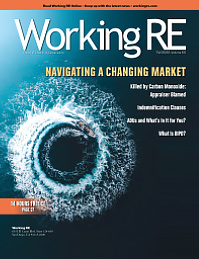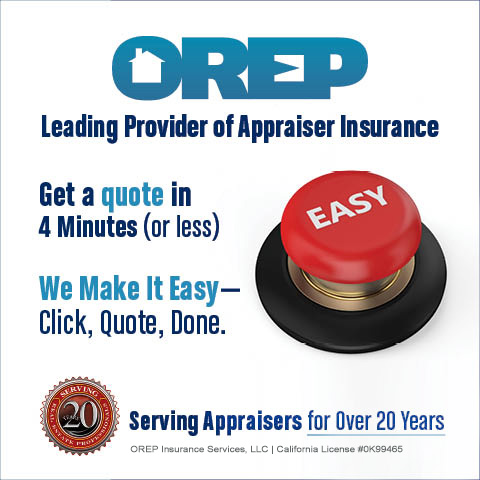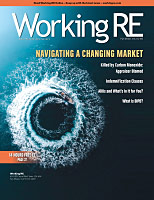 |
> The Appraiser Coach
> OREP E&O |
Between a Rock and a Hard Place
by Isaac Peck, Senior Broker at OREP.org
As I write this, I just finished up a webinar on discrimination claims that I did in a podcast style with Craig Capilla, one of the nation’s foremost appraiser defense attorneys. (Visit OREP.org/Craig-Capilla-Webinar to listen to the replay.)
Our conversation reminded me that over 2,000 state board complaints are filed against appraisers yearly, according to my friend Tim Andersen, MAI and CEO at TheAppraisersAdvocate.com. That means roughly three to four percent of all appraisers in the U.S. have a complaint filed against them every year!
Of course, the majority of complaints (and claims) against appraisers come from homebuyers and borrowers. This is a frustrating reality for appraisers—the vast majority of the consumers do not understand the appraiser’s role, methodologies, or standards.
Enter the specter of discrimination accusations and innuendos. With dozens of national news stories publicly accusing appraisers of discrimination, federal and state appraiser regulators proposing changes to appraisal standards, and new “Task Forces” being organized—appraisers are now caught firmly between a rock and a hard place.
If a Person of Color has an appraisal come in low and they can’t buy or sell a house for the contract price (without the buyer bringing additional funds!), or they don’t get the value that they wanted when refinancing—it must be the appraiser’s fault, and it must be because the appraiser is racist!
(story continues below)
(story continues)
This is the reasoning that we see playing out across the U.S. Dozens of HUD complaints have been filed against appraisers alleging discrimination and Janette Miller, a California appraiser, is being sued for discrimination. In Miller’s case, and in the majority of the HUD cases, the complainants/plaintiffs were homeowners who were refinancing and, one may assume, didn’t get the value they were hoping for.
While this dynamic is, for the most part, outside of the appraiser’s control—there are still steps you can take to protect yourself. First, be sure that your E&O insurance covers you for discrimination (many policies actually exclude discrimination!). Second, now is the time to step up the quality of your reports and build a defensible workfile that documents what you did and why you did it.
Third, thoroughly review all of your canned commentary and the wording you use in your appraisal and remove any mention of race, national origin, etc., as well as any of the “taboo” words Fannie Mae is warning appraisers against using to describe neighborhoods—like “desirable,” “superior,” “inferior,” and many more.
Lastly, take extra care to treat everyone you meet in the scope of your business with the utmost care and respect. If you have any questions or need liability advice, please check out OREP Insurance (OREP.org) .
Stay safe out there!
About the Author
Isaac Peck is the Editor of Working RE magazine and the President of OREP, a leading provider of E&O insurance for real estate professionals. OREP serves over 10,000 appraisers with comprehensive E&O coverage, competitive rates, and 14 hours of CE at no charge for OREP Members (CE not approved in IL, MN, GA). Visit OREP.org to learn more. Reach Isaac at isaac@orep.org or ( or (888) 347-5273. Calif. Lic. #4116465.
OREP Insurance Services, LLC. Calif. License #0K99465





by Everett T Clark
More often than not, the incidents I read about appear to be a case of an appraiser producing a substandard report. In some off these cases, had the borrower’s lender simply ordered another appraisal with the same characteristics in the home, it seems more likely than not that an additional appraisal may have satisfied the borrower. The case here in Marin City appears to be a possibility of a report that may not have been credible supplied by the initial appraiser. The thought that ideas are being floated to require an appraiser to “look outside of the subject neighborhood” to include varying neighborhood conditions is troublesome, as most of the training a large portion of us had during our trainee days focused on the process of substitution, and that was typically considered to be a home in the subject development/neighborhood. I’m getting toward the end of my appraisal career, which is fortunate based on the direction I’m seeing in the industry, but I feel bad for those just starting out, having to deal with (once again) the pressures of the lending industry trying to place blame for all the industry woes on the backs of the appraiser. They appear to want us out of the process, and have been moving toward that for quite some time. Maybe that’s just me, but it’s how I see the future of mortgage lending. There’s a reason they’re pushing desktop and automated evaluations, and it’s not because they want us MORE involved with the process.
-by Davy
Good article, but it does not really answer the question, “Why?” If one takes a look at how society and its relationship to and with government has evolved over the past five to ten decades, it becomes clear that the purpose of marginalization of any group is to obtain greater control of the group itself and ultimately the process. As society and government becomes more socialist in nature, the forced dependency upon government becomes a greater reality. Less and less autonomy and liberty is a result. It is all about control and who dictates what and how. The evolution of the appraisal industry is an example of this and soon, we will be in a situation where not only the product will change, but the entire process as well. The appraiser gets marginalized and has less and less control over the process and the final product; dictating to the appraiser via small systemic process and standards changes over time until the outcome is whatever the ‘dictator’ wants it to be. This, of course, kills innovation, free thinking, and in many cases, efficiency. All the while, the appraiser is and will be blamed for failures and unfairness in the real estate industry, the mortgage loan industry, etc. The frog gets boiled. The frogs be us.
-by DAS
This is all started by the Biden Administration’s woke agenda to keep racism alive and well so they can swoop in like social justice warriors and save the country from those wicked “white supremacists” who are the biggest threat to our democracy. Any more over regulation from this communist government and I will shut this business down and retire.
-by Appraiser
The reality is there IS and has been racism in the real estate process- top to bottom ( you decide where we fit in). They send out the test clients in 2022 showing the disparate treatment. The are doing double appraisals with vast value differences. So to say it’s just a person of color who doesn’t like the value is to sweep our professional issues under the rug.
-The best we can do is be aware and be fair and impartial AND make sure you can support your figures and thought processes.
by Timothy b Kastner Sr
Unreal. I would assume 99% of complaints are always about a low value for the homeowners mansion!!!! We should be able to obtain payment for our time when a complaint is found unwarranted.
-